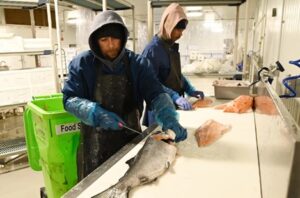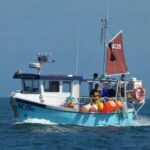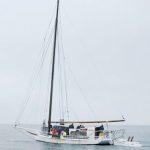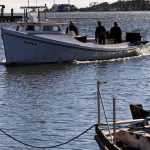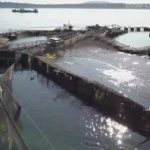Tag Archives: Sacramento River
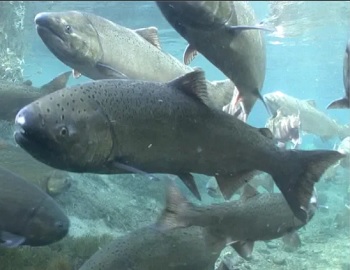
Critics rip feds’ “half-baked” plan to save California salmon
Fishing groups and water suppliers fought the Biden administration’s proposed drought rules for California’s water system, telling a federal judge Friday the emergency plans won’t stop the demise of endangered salmon. The rules call for new water temperature targets and improved collaboration between federal and state officials on the management of California’s two main water conveyance systems. But the Pacific Coast Federation of Fishermen’s Associations and other conservation groups cast the “interim operations plan” as a half-baked measure that will lead to a third consecutive year of salmon die-offs. >click to read< 17:36

Warming rivers in US West killing fish, imperiling industry
Salmon fisherman Mike Hudson sits on the bow of his boat at the Berkeley, Calif., Marina on Thursday, July 22, 2021. Baby salmon are dying by the thousands in one river and an entire run of endangered salmon could be wiped out in another. The plummeting catch has led to skyrocketing retail prices for salmon, hurting customers who say they can no longer afford the $35 per pound of fish, said Hudson, who has spent the last 25 years catching and selling salmon at farmers’ markets in Berkeley. “An extreme set of cascading climate events is pushing us into this crisis situation,” said Jordan Traverso, a spokeswoman for the California Department of Wildlife and Fish. 14 photos, >click to read< 10:03
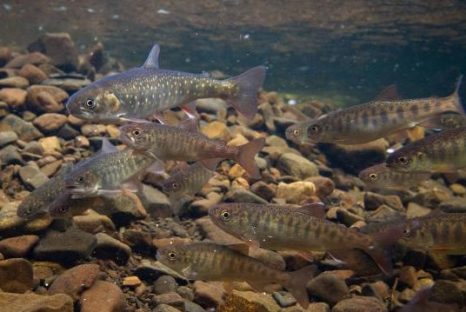
The impossible journey of the juvenile coho
As a Ph.D. student with the University of Washington’s Alaska Salmon Program, Jonny Armstrong — now assistant professor at Oregon State University’s Fish and Wildlife Department — snorkeled the Wood River in the Bristol Bay watershed. He soon encountered a mystery: juvenile coho as much as a mile from the nearest sockeye spawning ground had sockeye eggs in their stomachs. Sockeye lay their eggs in cold water, where there’s lots of oxygen. A juvenile coho, however, doesn’t best digest sockeye eggs in that water — cold slows its digestion, meaning if it stayed there, it might need a week to process just one meal. >click to read<22:38

Why California’s most productive salmon hatchery is millions of fish short
California’s most productive salmon hatchery has 6 million fewer fish this year, another sign the state’s drought woes linger despite last winter’s record rainfall. The federal Coleman National Fish Hatchery tries to produce about 12 million fall-run Chinook salmon for release each spring into Battle Creek, a Sacramento River tributary south of Redding. This spring, the Coleman hatchery will only have half as many young salmon to release. click here to read the story08:16

Research shows juvenile endangered California salmon use different rivers than expected
In a paper published online last week in the journal Biological Conservation, a team of California researchers revealed a surprising finding: Juvenile winter-run Chinook aren’t just using the Sacramento River as rearing habitat; after hatching, they also venture in large numbers into the river’s tributaries, including creeks that feed into it below Redding, as well the Feather and the American rivers. Winter-run Chinook are a distinct species of salmon that return each year to spawn and die in the Sacramento River near Redding. click here to read the story 11:16
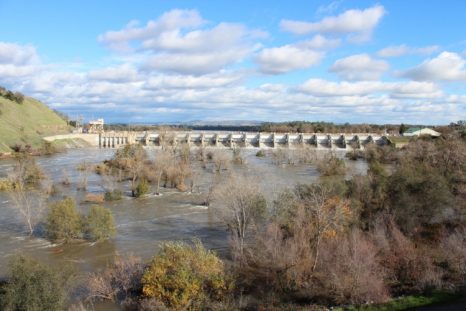
Low Numbers of Sacramento and Klamath River Salmon Point to Poor Season
Recreational and commercial fishermen attending the annual salmon fishery information meeting in Santa Rosa on March 1 received grim news from state and federal biologists – they will see reduced salmon fishing opportunities in both the ocean and the Sacramento and Klamath River systems, due to low returns of spawning fish to the rivers last fall. The pre-season numbers unveiled by Dr. Michael O’Farrell of the National Marine Fisheries Service estimate only 230,700 Sacramento River fall run Chinook adults and 54,200 Klamath River fall run adults will be in the ocean this year. Biologists noted that both forecasts are lower than those of recent years, with the forecast for Klamath fall run being among the lowest on record. Salmon originating from these river systems typically comprise the majority of salmon caught in the state’s ocean and inland fisheries. Ocean regulatory management for salmon fisheries on the ocean from Cape Falcon in Oregon to the Mexico-US Border is heavily based on these runs. continue reading the article by Dan Bacher here 11:22
Endangered winter-run Chinook Salmons fingerlings released into Sacramento River

The sound of endangered salmon surviving
 Any day now, next time a storm sends a pulse of water down California’s Sacramento River, biologists at the Livingston Stone National Fish Hatchery will release this year’s batch of winter-run Chinook salmon. Of the 400,000 4-inch-long salmon smolts they release, 570 will be emitting a coded sound from a tiny electrical device implanted in their bellies. They’ll beep all the way down the river and, for those lucky enough to make it, out to sea. Winter-run Chinook salmon are critically endangered. They are particularly vulnerable in times of drought, when water levels are low and river temperatures high. With California now in the fourth year of a historic drought — and the state is still in a drought, despite short-term relief from recent storms — winter-run Chinook salmon are in an extremely perilous state. Read the article here 07:11
Any day now, next time a storm sends a pulse of water down California’s Sacramento River, biologists at the Livingston Stone National Fish Hatchery will release this year’s batch of winter-run Chinook salmon. Of the 400,000 4-inch-long salmon smolts they release, 570 will be emitting a coded sound from a tiny electrical device implanted in their bellies. They’ll beep all the way down the river and, for those lucky enough to make it, out to sea. Winter-run Chinook salmon are critically endangered. They are particularly vulnerable in times of drought, when water levels are low and river temperatures high. With California now in the fourth year of a historic drought — and the state is still in a drought, despite short-term relief from recent storms — winter-run Chinook salmon are in an extremely perilous state. Read the article here 07:11
Only 3 percent of juvenile salmon survived California drought in 2015
 Only 3 percent of the juveniles of an endangered salmon species survived the drought along the Sacramento River in 2015 despite extraordinary efforts by federal and state officials to save them, federal officials said Monday. It marked the second straight year that the vast majority of juvenile winter-run Chinook salmon were cooked to death on the Sacramento, according to data released by the National Marine Fisheries Service. In 2014, only 5 percent of the juveniles survived. Read the rest here 14:42
Only 3 percent of the juveniles of an endangered salmon species survived the drought along the Sacramento River in 2015 despite extraordinary efforts by federal and state officials to save them, federal officials said Monday. It marked the second straight year that the vast majority of juvenile winter-run Chinook salmon were cooked to death on the Sacramento, according to data released by the National Marine Fisheries Service. In 2014, only 5 percent of the juveniles survived. Read the rest here 14:42
Big Trouble Looms For California Salmon — And For Fishermen
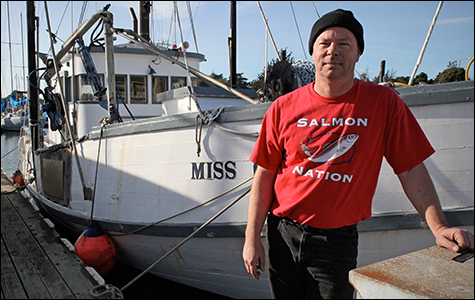 The West Coast’s historic drought has strained many Californians — from farmers who’ve watched their lands dry up, to rural residents forced to drink and cook with bottled water. Now, thanks to a blazing hot summer and unusually warm water, things are looking pretty bad for salmon, too – and for the fishermen whose livelihoods depend on them. Preliminary counts of juvenile winter-run Chinook are at extreme low levels. These are salmon that are born during the summer in California’s Sacramento River and begin to swim downstream in the fall. Read the rest here 11:38
The West Coast’s historic drought has strained many Californians — from farmers who’ve watched their lands dry up, to rural residents forced to drink and cook with bottled water. Now, thanks to a blazing hot summer and unusually warm water, things are looking pretty bad for salmon, too – and for the fishermen whose livelihoods depend on them. Preliminary counts of juvenile winter-run Chinook are at extreme low levels. These are salmon that are born during the summer in California’s Sacramento River and begin to swim downstream in the fall. Read the rest here 11:38
Federal models for saving the species have proved faulty as Feds scramble to avoid another mass salmon die-off in the Sacramento River
 Larry Collins, a commercial fisherman operating out of Pier 45 in San Francisco, said that in the fight over water, the fishing industry – and wild fish – lack the political clout compared with municipal and agricultural interests.“I’ve been around a long time, and I’ve fought the battle for a long time, and I’ve watched the water stolen from the fish,” he said. “The fish are in tough shape because their water is growing almonds down in the valley. To me, it’s just outright theft of the people’s resource for the self-aggrandizement of a few, you know?” “You got money you can buy anything,” he added. “You can buy extinction.” Read the rest here 12:57
Larry Collins, a commercial fisherman operating out of Pier 45 in San Francisco, said that in the fight over water, the fishing industry – and wild fish – lack the political clout compared with municipal and agricultural interests.“I’ve been around a long time, and I’ve fought the battle for a long time, and I’ve watched the water stolen from the fish,” he said. “The fish are in tough shape because their water is growing almonds down in the valley. To me, it’s just outright theft of the people’s resource for the self-aggrandizement of a few, you know?” “You got money you can buy anything,” he added. “You can buy extinction.” Read the rest here 12:57
Sacramento River King Salmon hold on, but drought, heat may take toll next year

The California drought and a strange warming trend in the ocean have not yet killed off the Sacramento River’s king salmon, which are swimming off the coast unaware of all the doomsaying. That could all change next year, fisheries experts warn, when the full effect of the four-year dry spell hits the scaly creatures where they live. There are 652,000 fall run chinook salmon that were born in the Sacramento swimming in the sea right now, about 17,000 more fish than there were at this time last year, according to estimates by the National Marine Fisheries Service. Read the rest here 09:23
More salmon get truck rides due to drought
 Nearly 1 million juvenile Chinook salmon this week will get a truck ride from Red Bluff to San Pablo Bay as a detour around harmful Sacramento River conditions caused by drought. The fish are the last of 12 million fall-run Chinook salmon produced this year at Coleman National Hatchery near Red Bluff. Normally, all those fish are released into Battle Creek, a tributary of the Sacramento, to journey downstream to the Pacific Ocean on their own. Read more here 18:25
Nearly 1 million juvenile Chinook salmon this week will get a truck ride from Red Bluff to San Pablo Bay as a detour around harmful Sacramento River conditions caused by drought. The fish are the last of 12 million fall-run Chinook salmon produced this year at Coleman National Hatchery near Red Bluff. Normally, all those fish are released into Battle Creek, a tributary of the Sacramento, to journey downstream to the Pacific Ocean on their own. Read more here 18:25
Hundreds of salmon stranded in farm ditches
 State and federal wildlife officials are scrambling to figure out how hundreds of endangered salmon recently became stranded in irrigation ditches in the Colusa basin, west of the Sacramento River. Finding the answers is a matter of some urgency, because tens of thousands of fall-run Chinook salmon are weeks away from their annual return from the ocean to the Sacramento River and could also become trapped. more@sacbee
State and federal wildlife officials are scrambling to figure out how hundreds of endangered salmon recently became stranded in irrigation ditches in the Colusa basin, west of the Sacramento River. Finding the answers is a matter of some urgency, because tens of thousands of fall-run Chinook salmon are weeks away from their annual return from the ocean to the Sacramento River and could also become trapped. more@sacbee
Salmon won’t be getting help from Delta gates, This year the gates will not be closed.
Water diversion gates in the Sacramento-San Joaquin Delta near Walnut Grovewill not be closed this month to assist migrating salmon, as they were last year. The Delta Cross Channel Gates, operated by the U.S. Bureau of Reclamation, were built in 1953. They are typically open in fall to divert fresh water from the Sacramento River to the interior of the Sacramento-San Joaquin Delta. This reduces the salinity of water exported from the Delta for urban and farm use. In recent years, concern has emerged that salmon migrating upstream to spawn in the Mokelumne River are disoriented by flows diverted through the gates and often end up spawning in the wrong stream. So the gates were closed last year for 10 days in October, which may have contributed to a rebound in salmon production at the Mokelumne River Hatchery, operated by the state Department of Fish and Game.
http://www.sacbee.com/2012/10/23/4930924/salmon-wont-be-getting-help-from.html


































